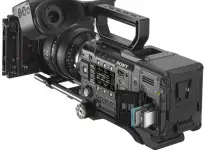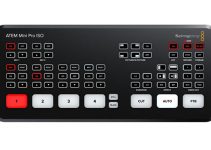Less than a month ago Sony announced the successor in the A7R line of cameras, the Sony A7R III. With the new model, the company promises to deliver better image and video quality (with full 4K recording modes and S-Log3 Gamma) while maintaining the ease-of-use, form-factor, and familiar user interface that Sony shooters have come to love over the years.
So, if you’re one of those folks planning to make the switch or upgrade to the Sony A7R III, YouTube filmmaker Jason Vong has created a video that lists ten things to consider about the camera before buying.
Firstly, keep in mind that the A7R III does not support PlayMemories, meaning that you’ll be unable to use applications/features within the PlayMemories ecosystem such as time-lapse recording or applying filters. If you still want to be able to transfer files from the camera to your phone, however, you’ll be able to do so with the PlayMemories app for Mobile.
Second, the new model does not include an articulating screen. While this is a feature highly demanded by many A7R users, the wish for a more adjustable screen has not been granted for this time around, which does make tasks such as self-recording or vlogging rather challenging since you can’t see yourself from the front.
For those who have stocked up on A7R batteries in the past, it’s time to get rid of them to make space for the new batteries designed specifically for the A7R III. While the change may come as an inconvenience, there is a silver lining since the latest power units are claimed to hold capacity up to 2.2 times more than the previous battery design. This allows filmmakers and photographers to last longer in the field without having to waste time on swapping batteries.
Regarding file management, Sony has introduced the ability to rate files out of five stars. This extra metadata will make it easier for people to sort through the photos and videos that they took, allowing them to maximise their time during offloading media in post. In addition to the rating system, Sony also will enable you to protect files on the A7R III if required.
Another minor but useful improvement to the A7R III’s software is the ability to access the menu even while the camera is writing data. On previous versions of the camera, you had to wait for the device to complete the process before operating the menu. With the A7R III, you can save time and access the menu functions you need whenever you want on the fly.
Going back to the hardware side of the camera, Sony has opted to include a USB Type C port with the A7R III. With the inclusion of this interface, you are now able to transfer files at a much faster rate compared to using USB 2.0 or transferring via memory card. In fact, you’ll be even able to charge your A7R III utilizing the port due to the multifunction capabilities of USB Type C.
When it comes to viewing your shots, you will find that with the A7R III, it’s now easier to do that with the drastically improved viewfinder and LCD screen. Sony touts that these are brighter, sharper, have increased contrast and more accurate colors, allowing you to view your shots effortlessly, even in direct sunlight.
As a photographer, it’s common to find yourself having to switch from portrait to landscape when taking a bunch of photos at a time. While this happens, it may be somewhat difficult to focus since you have to move your focus area when switching orientations. To remedy this shortcoming, Sony has implemented a feature wherein once you’ve set the focus area for both horizontal and landscape orientations, the camera will automatically switch between the settings for each position.
One feature that some people may not know about the Sony A7R III is that when shooting in the Super 35mm video mode, there is an increase in image quality, particularly in detail and sharpness. That’s because the camera records in 5K and downsamples the footage to 4K, hence resulting in a better image.
While filmmakers will appreciate the improved quality with the 5K downsampling, Sony did leave out one feature that may break the hearts of many shooters – the ability to shoot in 4K at 60 fps. Unfortunately, users of the camera won’t be able to enjoy the full glory of the overcranked 4K footage that’s currently not supported by the otherwise stunning 42MP Full-Frame beast.
Vong claims that the reason behind this marketing decision is the possible inclusion of the feature on the Sony A7S III. For now, this statement is just a speculation, so we’ll have to wait until the next official mirrorless camera announcement from the company come about.
[source: Jason Vong]
Order Links:
Sony Alpha a7R III Mirrorless Digital Camera (B&H, Amazon US)
Disclaimer: As an Amazon Associate partner and participant in B&H and Adorama Affiliate programmes, we earn a small comission from each purchase made through the affiliate links listed above at no additional cost to you.



